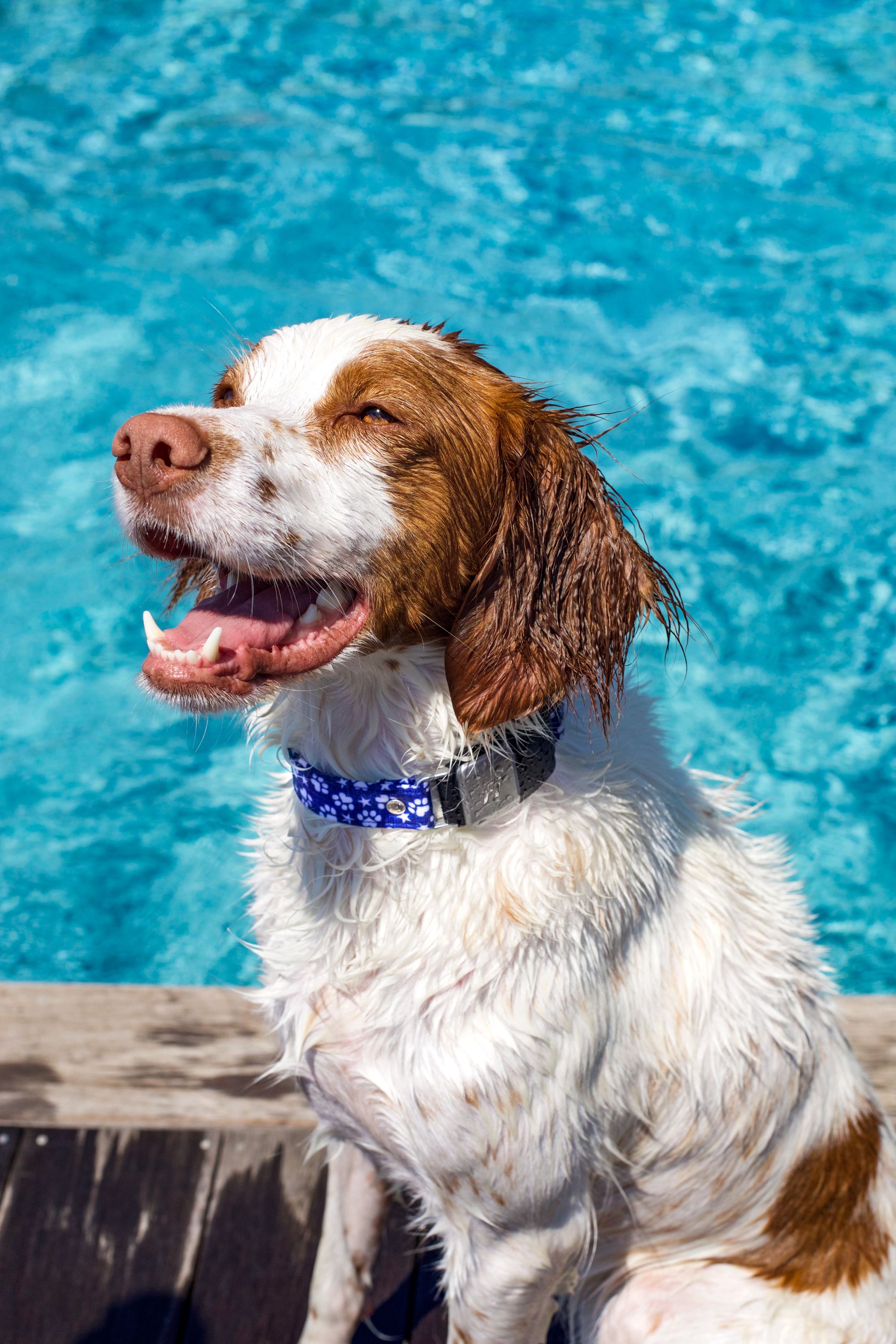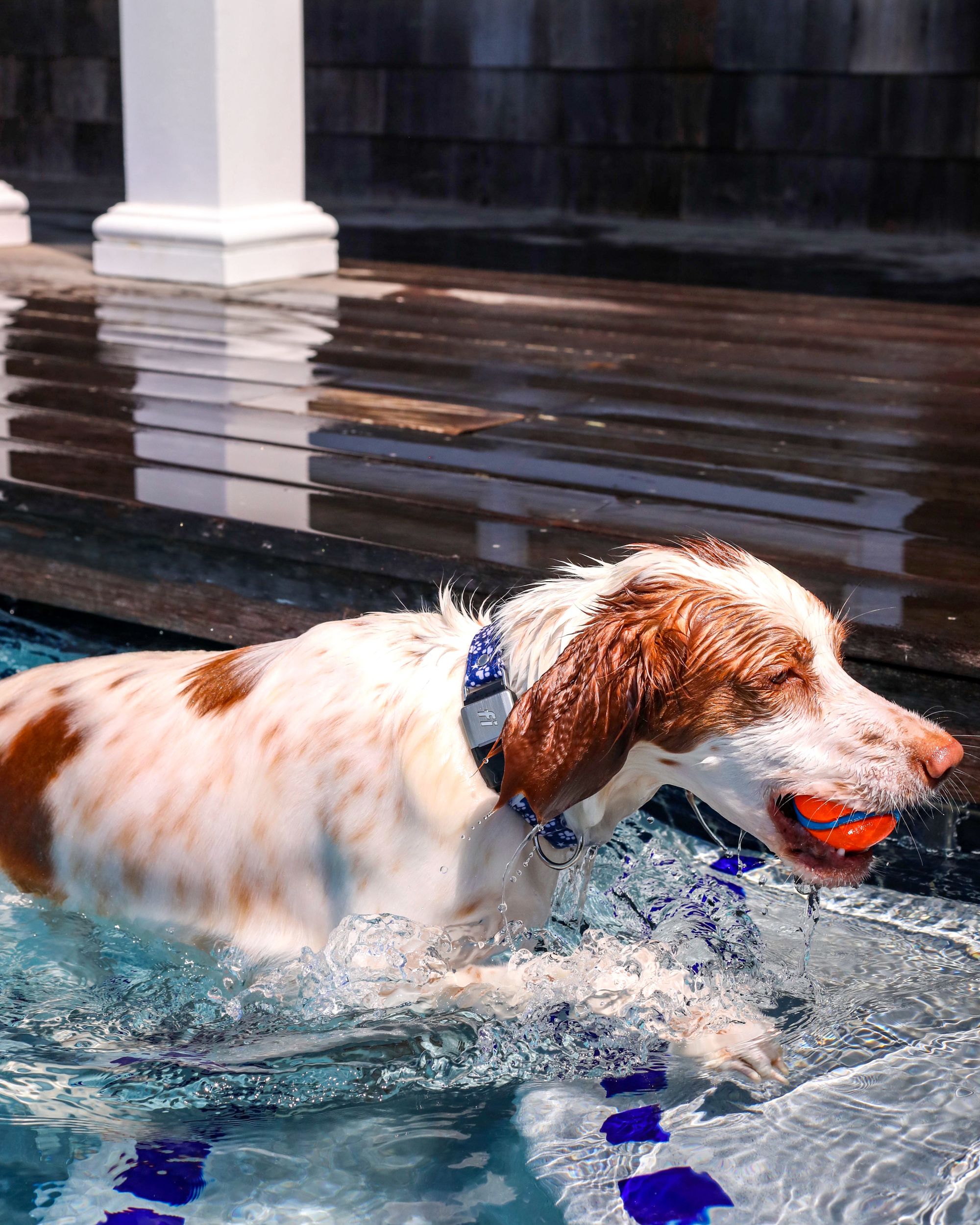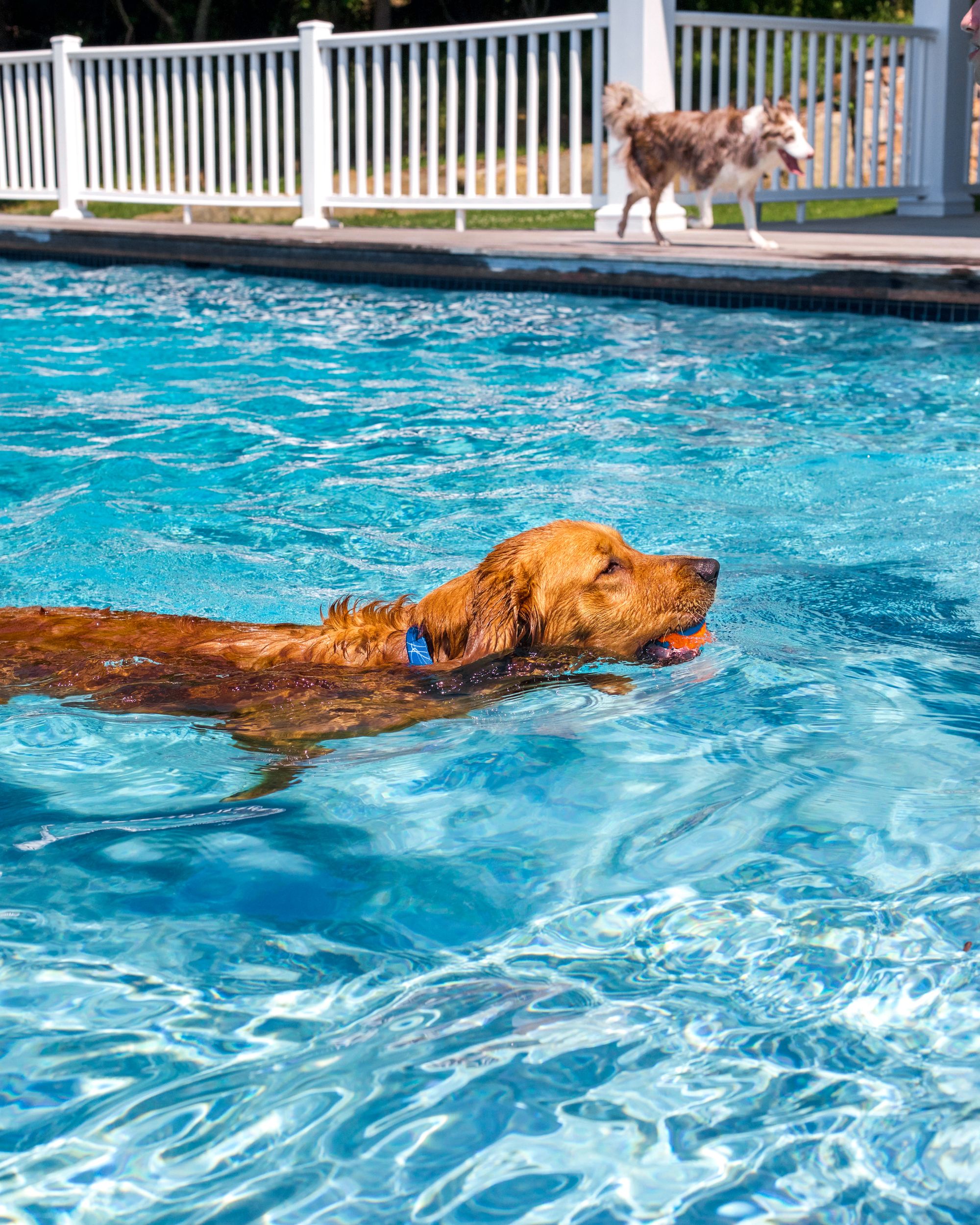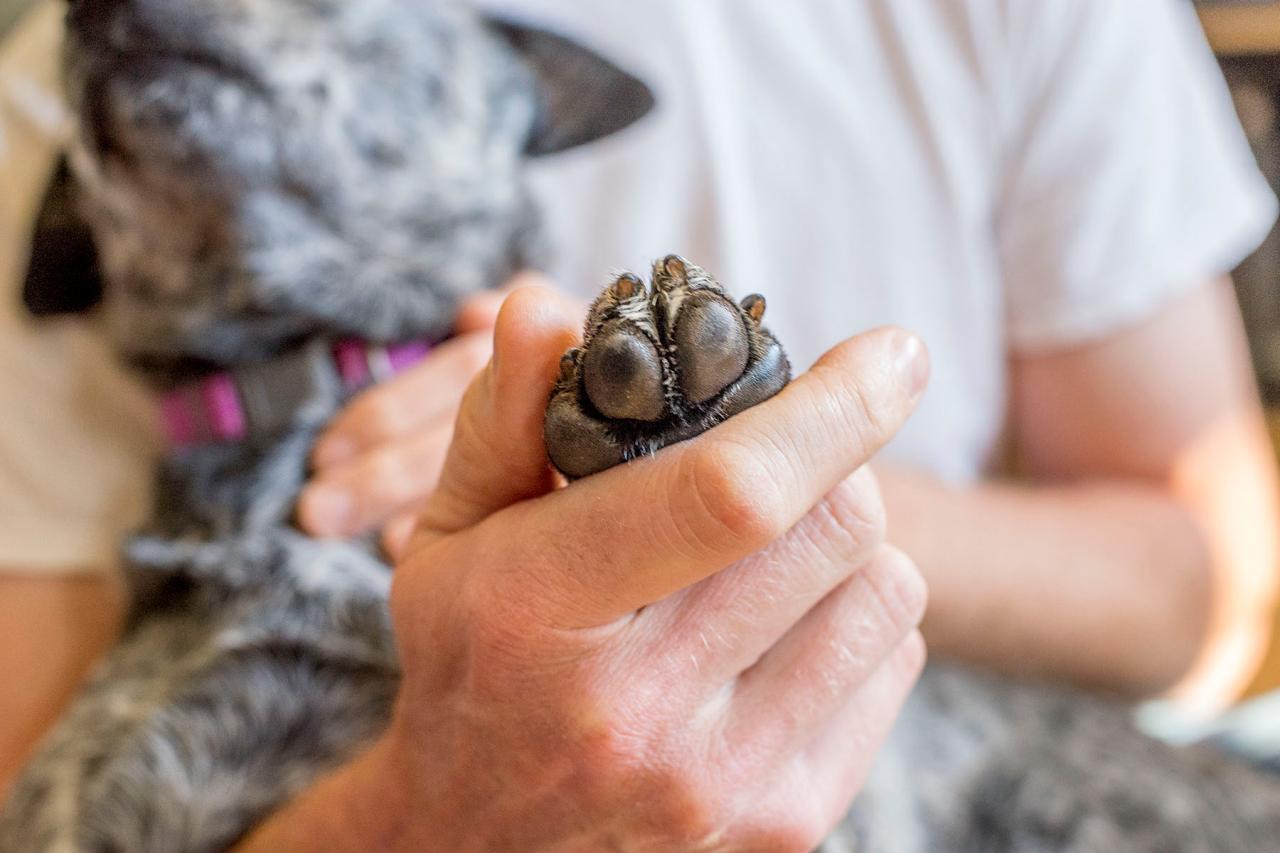As with everything, dogs need to be safely exposed to different interactions to avoid building negativity towards it or creating a traumatic experience. Before a dog can swim, they need to be properly introduced to water positively and at a young age.
Begin by exposing your dog gradually to water using a hose to water them down and then let them walk around in an inch or two of water. Another great way to expose your dog to water and/or swimming is by letting them watch you jump and swim in water. This will peak their interest as puppies and show them that water is fun!

There are dogs that are born feeling comfortable with water and jump right in while others are skeptical or avoid it. Starting at an early age with water exposure avoids a resistance to water in the future. A reason some dogs may avoid water is because they have a negative association with it, therefore, it's important the dog plays with water and turns that negative association to a positive one.
There are breeds such as Golden Retrievers, Labrador Retrievers, or Portuguese Water Dogs that are known swimmers - however, dogs with shorter legs who are less athletic might have a harder time being good swimmers. Regardless of whether your dog is a natural born swimmer or hasn’t yet been exposed to water, don’t throw your dog into the water against his will or by surprise. Additionally, don’t toss them in deep and cold water. By tossing them in, you may traumatize the dog and create a negative association for the dog with water.

After gradually exposing your dog to water using a hose and allowing him to play in the sprinkler or some form of shallow water, they will be well acclimated to water itself. After that, play with him and take him to play in water so that they perceive it as fun. Once your dog enjoys playing in water, call him into the water allowing him to swim. If he wants to get out, don’t force him to stay in, and if he doesn’t want to go in, don’t force it.
Most importantly, train your dog to swim for short periods of time as it can be very exhausting for the dog. Slowly work your way into larger bodies of water until your dog is completely comfortable swimming in water and can safely remain afloat for a substantial amount of time. For example, sending him into an ocean with waves isn’t safe to begin your dog's swimming training and water exposure. Lastly, your dog will get better with practice, therefore, integrate swimming into your dog's weekly or monthly schedule so that he remains exposed and fit. It’s a great source of exercise!

Keep in mind a few essential safety tips:
- Never let your dog swim unsupervised whether it is in a pool or an ocean.
- Watch for fatigue regardless of your dog being a great swimmer, because any dog can get caught off guard by a wave in the ocean or get tired while swimming to fetch a toy you threw too far.
- Additionally, be mindful how long your dog is swimming in certain types of water. Too much salt water can irritate your dog’s skin and too much chlorine water isn’t healthy for a dog to ingest.
And don’t worry - your dog’s Fi collar is waterproof! Have fun and stay cool!






